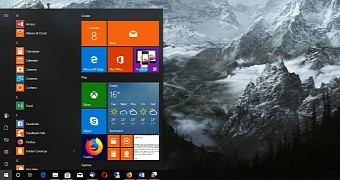Microsoft announced at the Build 2018 developer conference that Windows is running on nearly 700 million devices, a substantial increase since the same event one year ago.
The company said at Build in 2017 that Windows 10 was powering 500 million devices, so in approximately 12 months, it gained nearly 200 million installs.
These figures include not only desktop computers, but also Xbox gaming consoles, phones, and the HoloLens, but needless to say, PCs are the ones accounted for the biggest share of the numbers.
Failed goal
Windows 10 launched back in July 2015 and at that point, Microsoft said it wanted to bring the operating system to no less than 1 billion devices within the first three years on the market. This plan has obviously failed, and the company itself acknowledged that it needs more time for this ambitious goal.
On the other hand, adoption of Windows 10 is likely to grow in the coming months thanks to the release of the April 2018 Update, as it includes several features that could convince users of older Windows versions to upgrade.
But the bigger problem for Windows 10 appears to be Windows 7. The 2009 operating system is still the world’s number one desktop operating system, despite the approaching end of support planned for January 2020.
Windows 7 is currently running on 43.57 percent of the desktop systems across the world, while Windows 10 is just the runner-up with 33.81 percent. Windows 7 has thus survived a rather aggressive push from Microsoft to convince users to upgrade, and there’s a chance it’ll remain a popular choice for many users in the next months.
Microsoft will officially stop releasing security updates for Windows 7 in early 2020, so by that point, the company expects an increasing number of devices to be upgraded to Windows 10 for security reasons.

 14 DAY TRIAL //
14 DAY TRIAL //